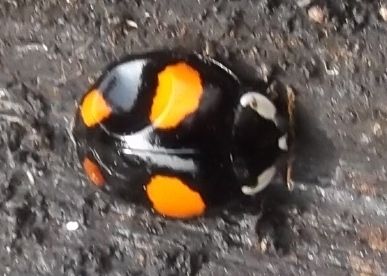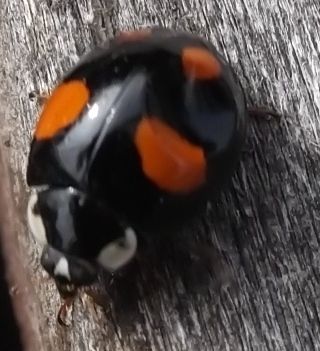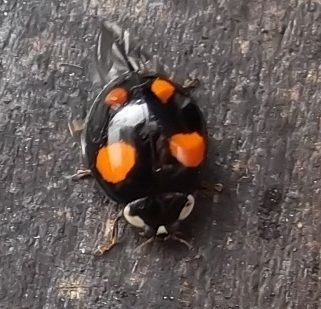Ladybird thingy
- Thread starter Whittler Kev
- Start date
You are using an out of date browser. It may not display this or other websites correctly.
You should upgrade or use an alternative browser.
You should upgrade or use an alternative browser.
After a little google that appears to be a harlequin ladybird.
Apparently they eat other ladybirds...
edit///////
some more info below from a site called uksafari - looks like quite a nice site I'm going to browse that later....
Special features: Harlequin Ladybirds are a recent arrival to the UK. The first ones to land here were seen in 2004, but at the time of writing this (2013) they have since spead to most parts of England and Wales, and they've also been found in the east of Ireland and southern Scotland.
Another common name for this ladybird is the Multi-coloured Ladybug, because the markings of Harlequin Ladybirds are extremely variable - as can be seen from the photos above. Identification is not always easy, but the large size, the orange-red legs and the distinctive black W-shaped marking on the mostly white pronotum (the bit behind the head) are the most distinguishing features.
They're also known as the Asian Ladybird because they were introduced from Asia to Europe for the biocontrol of aphids. Unfortunately they also have an appetite for our native ladybirds and many other invertebrates including butterflies and lacewings.
When they were introduced to America they became the commonest ladybird in less than 25 years as they spread throughout the country. Canada now has a similar spotted invasion. Harlequins hibernate in large groups in buildings in the autumn months and so in America they're also known as 'Halloween Ladybirds'.
Apparently they eat other ladybirds...
edit///////
some more info below from a site called uksafari - looks like quite a nice site I'm going to browse that later....
Special features: Harlequin Ladybirds are a recent arrival to the UK. The first ones to land here were seen in 2004, but at the time of writing this (2013) they have since spead to most parts of England and Wales, and they've also been found in the east of Ireland and southern Scotland.
Another common name for this ladybird is the Multi-coloured Ladybug, because the markings of Harlequin Ladybirds are extremely variable - as can be seen from the photos above. Identification is not always easy, but the large size, the orange-red legs and the distinctive black W-shaped marking on the mostly white pronotum (the bit behind the head) are the most distinguishing features.
They're also known as the Asian Ladybird because they were introduced from Asia to Europe for the biocontrol of aphids. Unfortunately they also have an appetite for our native ladybirds and many other invertebrates including butterflies and lacewings.
When they were introduced to America they became the commonest ladybird in less than 25 years as they spread throughout the country. Canada now has a similar spotted invasion. Harlequins hibernate in large groups in buildings in the autumn months and so in America they're also known as 'Halloween Ladybirds'.
Last edited:
One of many, many species of Ladybird (beetles). The spot pattern is indicative of species. In Canada, the sizes range from pin-heads to peas. Some species (eg Asian 2-Spot) were introduced for pest control as they are more aggressive feeders on aphids. That boosted their reproductive succcess. The concern, as subtle as it may be, is that the 2-Spot is displacing native species, perhaps driving them in the direction of extinction. Extensive population studies across Canada in the 1980's but I don't know the results.
I had doubts that this was real, and thought it was a wind-up, but I see wings in the last shot. Wow, I've not seen that colour form before. Harlequin ladybird Harmonia axyridis is pretty much all it can be, unless it is some continental species blown off course. I agree that it is a Harlequin.
Hhe blister is simply pressure damage. It has hit something, or been partially crushed, and the hard wing case has deformed inward in the same way ar car bodywork becomes dented. So long as the soft tissues beneath are not damaged the insect is none the worse for its dent.
Here's a website with more information on them, and where you can submit your record.
http://www.harlequin-survey.org/recognition_and_distinction.htm
Hhe blister is simply pressure damage. It has hit something, or been partially crushed, and the hard wing case has deformed inward in the same way ar car bodywork becomes dented. So long as the soft tissues beneath are not damaged the insect is none the worse for its dent.
Here's a website with more information on them, and where you can submit your record.
http://www.harlequin-survey.org/recognition_and_distinction.htm
Similar threads
- Replies
- 8
- Views
- 196
- Replies
- 10
- Views
- 263
- Replies
- 14
- Views
- 537
- Replies
- 8
- Views
- 552




